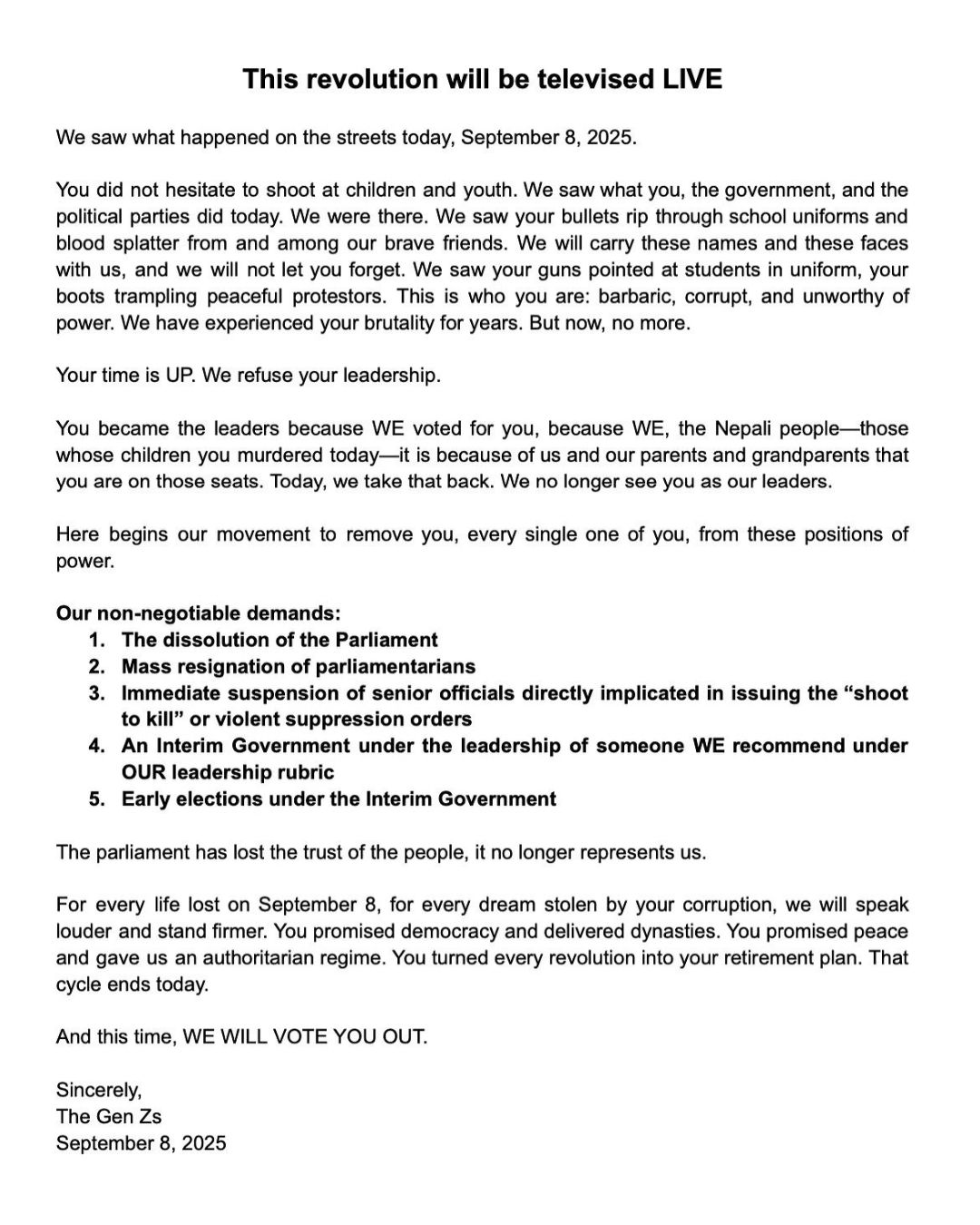In the capital city of Kathmandu, Nepal, clashes between Gen-Z protestors and police have resulted in at least twenty deaths and over three hundred injured. The protests were fuelled by widespread anger over the government's recent ban on several social media apps, as well as long-standing issues of corruption. The Nepalese army was deployed after protestors violated a curfew and entered restricted zones.
Thousands of young demonstrators took to the streets to voice their frustrations. When demonstrators threw water bottles and tree branches at police, the situation descended into violence. Police retaliated with rubber bullets, tear gas, and water cannons. The conflict escalated when some demonstrators even succeeded in breaking into the Parliament compound.
The Kathmandu District Administration Office extended the initial curfew, which was first imposed in the Baneshwar area. The new restrictions now encompass numerous high-security locations, including:
- The President's residence (Shital Niwas)
- The Vice-President's residence
- Singha Durbar
The Prime Minister's residence in Baluwatar
According to Chief District Officer Chhabilal Rijal, the curfew is in effect from 12:30 pm to 10:00 pm local time. The public is strictly prohibited from gathering, protesting, or moving within these zones.
The violence has also led to injuries, including two people hit by rubber bullets. One of them, journalist Shyam Shrestha of Kantipur Television, is presently receiving treatment at Civil Hospital after suffering injuries while covering the demonstrations in Baneshwar.
Additionally, protests have spread outside of Kathmandu, with local authorities enforcing a curfew in Pokhara after protesters allegedly damaged the Chief Minister's office and injured someone in Damak, the hometown of Prime Minister KP Sharma Oli. Prime Minister Oli has called an emergency cabinet meeting in response to the disturbances.
The root cause of the protests
The government's recent ban on 26 social media sites, including popular apps like Facebook, YouTube, and X, which went offline on Friday, served as the impetus for the protests. For news, commerce, and entertainment, millions of Nepalis, especially the younger generation, depend on these platforms.

Public outrage has been sparked by this action, with many people accusing the government of stifling free speech while neglecting systemic corruption. As 24-year-old student Yujan Rajbhandari said, the social media ban was a trigger but not the only reason for the protests. "We are protesting against corruption that has been institutionalised in Nepal," he said.
Ikshama Tumrok, 20, was another student who voiced her disapproval of the government's "authoritarian attitude". "We want to see change," she said. This must stop with our generation, even though others have suffered through it.
With viral TikTok videos contrasting the hardships of regular people with the lavish lifestyles of politicians' children, the ban has increased public annoyance. One protester, Bhumika Bharati, suggested the government's action was motivated by fear: "There have been movements abroad against corruption, and they (the government) are afraid that might happen here as well."
The government stated that the ban was a result of a Supreme Court order from September of the previous year. The impacted companies were given a seven-day window to register in Nepal, assign a resident grievance handling and compliance officer, and designate a point of contact.
The government said in a statement issued on Sunday that it respects the right to free speech and that it is dedicated to "creating an environment for their protection and unfettered use".
This is not the first time Nepal has restricted online platforms. The government previously blocked the Telegram messaging app in July, citing concerns about online fraud and money laundering. A nine-month ban on TikTok was lifted last August after the platform agreed to comply with Nepali regulations.
Also Read: Curfew in Nepal as Gen Z protests escalate; India secures border


